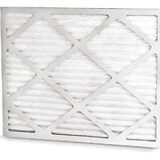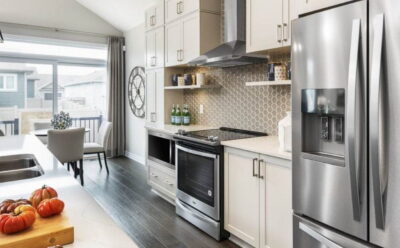 Having a monthly maintenance routine helps you stay on top of those basic tasks that make your home operate efficiently, keep your family safe and reduce costly repairs.
Having a monthly maintenance routine helps you stay on top of those basic tasks that make your home operate efficiently, keep your family safe and reduce costly repairs.
Here are five maintenance tips for this month, including links to show you to do them.
Vents & your monthly maintenance routine
Dryer and other vents can get plugged by snow and ice, leading to a build-up of deadly carbon monoxide inside your home. As part of your winter monthly maintenance routine, check all vents monthly and after every snowstorm. Check your gas and electric meters as well. Gently remove snow or ice with a brush, not by banging. And don’t use salt, chemicals or hot water. If you can’t remove the snow or ice, call your gas company or a plumber. In the summer, check that vegetation isn’t blocking vents.
Smoke and carbon monoxide detectors
It’s a fact: Detectors that don’t work could mean death for your family. Take a couple of minutes to check them every month. Here’s how.
Garage door safety feature
Testing the safety features of your garage door monthly could prevent damage to your car or, worse, injury to you or a family member. A check includes ensuring the safety beams stop the door from closing if anything is in its path. Check the auto-reverse feature (if you have one) by sticking a block of wood where the door touches the ground; if the door doesn’t reverse within a couple of seconds of touching the wood, disconnect the door opener until the problem is fixed. More on maintaining your garage door.
Furnace filters
Furnace filters block dust, hair and other household gunk from entering your furnace and damaging it. A clogged filter reduces your furnace’s efficiency and could result in costly repairs, hence the need for regular filter inspections.
Filters have varying maintenance schedules. For instance, pleated disposable ones should be checked monthly and replaced at least every three months.
More information on furnace filter types and maintenance here.
Depending on the brand, you may need to check the filter every month or two on your heat recovery ventilator (HRV), which brings and warms fresh air into your home. Your operator’s manual will have a maintenance schedule. If you don’t have the manual, do an online search using the manufacturer’s name and model number.
Extension cords
Inspect extension cords for wear and replace immediately if worn. Do not try to repair by covering a worn area with black electrician’s tape. And never run an extension cord under a rug – it can overheat and cause a fire. More tips on the safe use of extension cords.
Got a maintenance task you’re not sure how to do?
Drop us a line at info@allthingshome.ca or message us through Facebook.







